

| Português |
|
| English |
|
Electro-acoustic classical guitars (ex. Takamine) usually have the top plate more rigid than good quality acoustic guitars. The top plate rigidity reduces the sound level produced by these instruments. This characteristics, however, is not so important, once those guitars are used with the support of amplifiers. In addition to this, the top plate rigidity reduces significantly the chance of acoustic feedback. Some other electric classical guitars go to the extreme of not having acoustic body. (for instance, Yamaha's SLG100N).
The sonority of these instruments is very well defined and can be adequate to several musical tastes and styles.
However, who really whishes to get the sonority of an acoustic guitar may become frustrated. Even counting with the support of parametric equalizers and reverbers, this task is arduous. The sound from these instruments is practically the "sound of the string". The typical resonances of the acoustic guitar are missed.
The objective of this work was, by using Digital Signal Processors DSP, signal processing techniques and modeling, to process the signal produced by electric and electro-acoustic guitars in order to try to add the sonority of a a well micked acoustic guitar. Thus, it is possible to join the practical character and low tendency to acoustic feedback of electric and electro-acoustic guitars to the typical sonority of a good acoustic guitar.
Note: The name "Violão Hibrido"(Hybrid Guitar) may sound a bit strange, but it tries to indicate that the final sonority obtained is partially "natural" (vibration of the guitar strings under the command of the player) and partially synthetic (the acoustic characteristic of the guitar is recreated).
The equipment is composed of two units:
The processing unit has Motorola's DSP56311 as a base and is responsible for the signal filtering.
The operation unit has a display LCD and a set of keys so that the user operates the device.
The division of the equipment into two units allows the assembling of the operation unit together with the instrument, so allowing an easier access to the equipment controls.
The equipment has the following features:
Some pictures of the prototype are presented as follows. Click on any image to enlarge it.
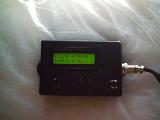
Figure 1 |
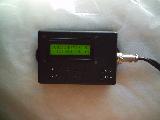
Figure 2 |
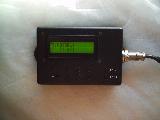
Figure 3 |
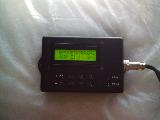
Figure 4 |
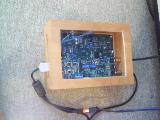
Figure 5 |
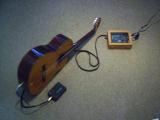
Figure 6 |
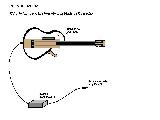
Figure 7 |
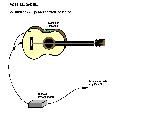
Figure 8 |
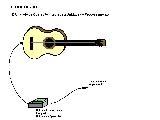
Figure 9 |
We make available some small MP3 files showing the sonority, before and after the equalization. Click on the loudspeaker icon to hear the files.
Comments:
Do not hesitate in contacting me as to send comments, critics, doubts, and suggestions. (marcosvh@sidus.eng.br)
Last update: 29/10/2005